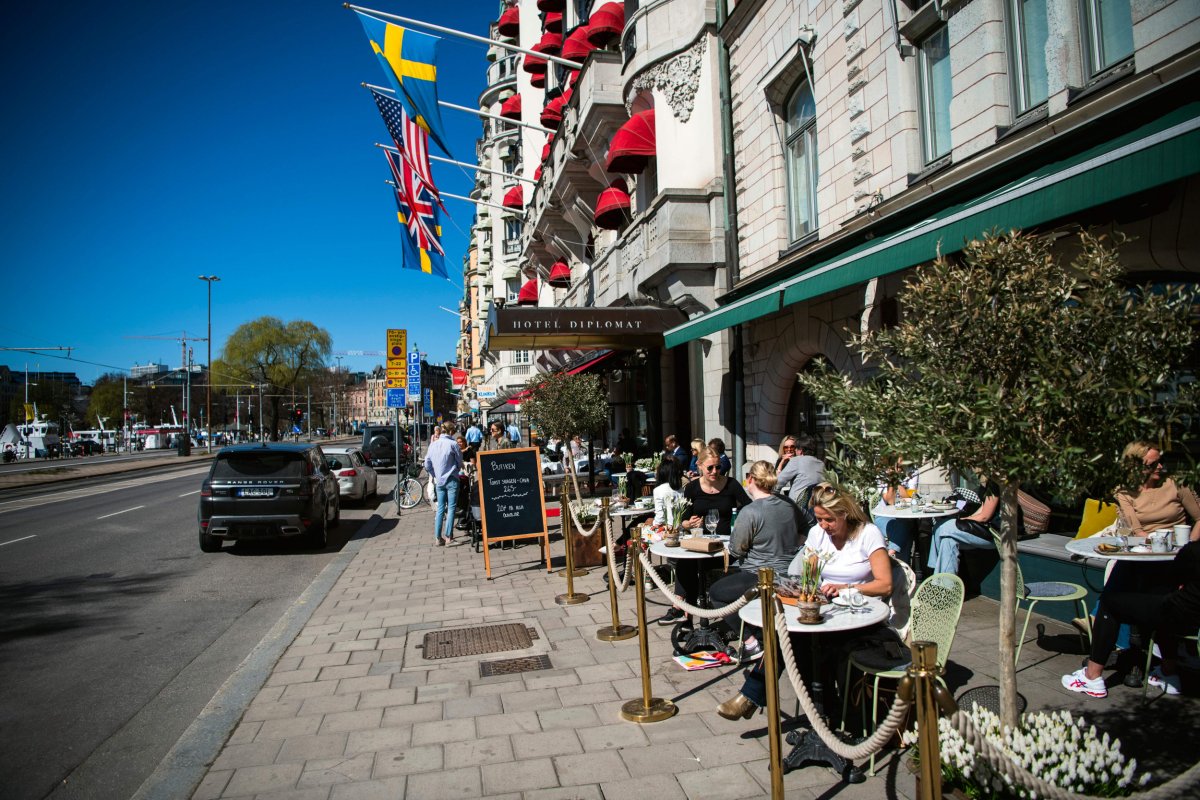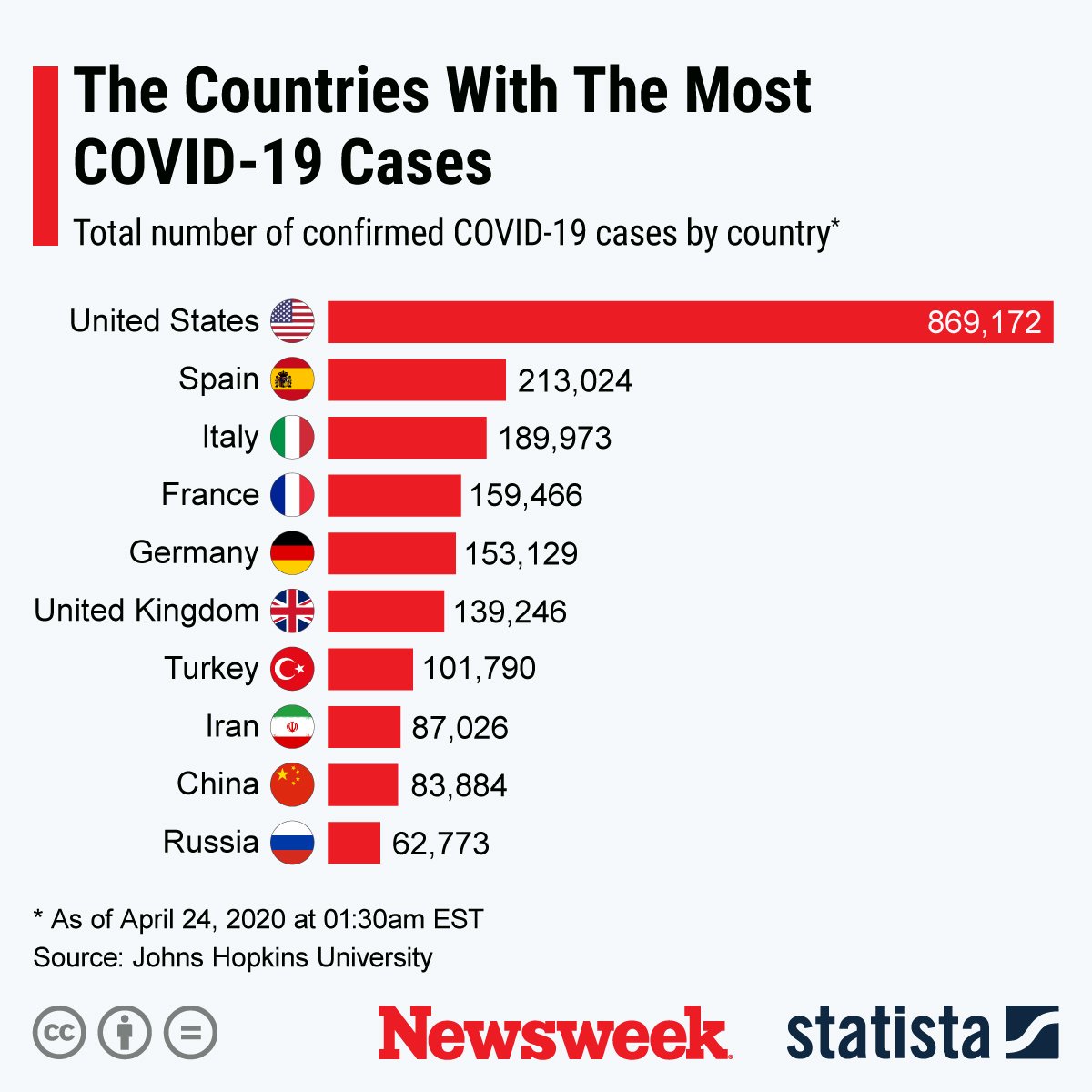The novel coronavirus in Sweden has spread to over 17,500 people and killed more than 2,100, as of Friday, according to the latest figures from Johns Hopkins University. While cases continue to grow, the country has taken the surprising route of not imposing a nationwide lockdown.
Despite international derision over the decision, the scientist behind Sweden's coronavirus strategy claims the controversial move has been effective as the increased number of people exposed to the virus will hopefully help prevent a second wave of infections.
The decision to not issue a lockdown "worked in some aspects because our health system has been able to cope," Anders Tegnell, the chief state epidemiologist at Sweden's public health agency, told the BBC's Radio Four's Today program.
The country has by far and away the highest death toll among Scandinavian countries—more than double the number of cases in Denmark and nearly four times as much as in Finland.
But Tegnell argues: "At least 50 percent of our death toll is within elderly homes and we have a hard time understanding how a lockdown would stop the introduction of disease.
"We already had a law making it illegal for visitors to come to elderly homes. They need constant care, they need a lot of people coming and going to take care of them.
"So it's a bit unclear to us if a lockdown really would have stopped this from happening or not."
Earlier this week, Tegnell told CNBC that the agency is "still very concerned about the elderly. It's the group we said we needed to protect," he said, noting that the agency was working with different homes to see how the risk factor could be lowered.
Tegnell also claimed up to 20 percent of residents in Stockholm, the capital of Sweden, have been infected with the virus, noting "We believe that we have an immunity level, if I remember rightly, somewhere between 15-20 percent of the population in Stockholm.
"This is not complete herd immunity but it will definitely affect the reproduction rate and slow down the spread (of a second wave)," he added.
Stockholm has reported nearly 15,300 confirmed cases of COVID-19, with at least 1,765 deaths, including among very elderly residents of nursing homes, according to the agency.
On Tuesday, a study by Sweden's public health agency projected nearly a third of Stockholm will have contracted the virus by early May, claiming the capital may have passed the peak of the outbreak.
According to the study based on data from random testing and cases reported to hospitals, around one third of Stockholm's population of nearly a million will be infected by May 1.
The agency's study suggested the rate of new infections in Stockholm peaked on April 15, while a decline was not yet evident from the data. The study also estimated that for each confirmed case, there were around 999 milder cases not recorded because people did not seek medical help.
Anders Wallensten, the deputy state epidemiologist at the agency, told reporters at a press briefing on Tuesday: "Already a bit more than a week ago, the peak was reached, at least according to this model, and we can expect fewer cases each day."
"But you also have to remember...that two-thirds have not been infected and can still get it," Wallensten added, noting it was too early to say when Stockhom's death toll would start to fall.
"The curve for the number of new cases hasn't started to decline yet, either, so we are not there yet," he said.
While Tegnell claims he is "fairly confident" in the current combat strategy, several health experts in the country have raised concerns over the relaxed approach, compared with other nations, including Cecilia Soderberg-Naucler, a professor of microbial pathogenesis at the Karolinska Institute in Sweden.
Soderberg-Naucler is among the nearly 2,300 academics who last month signed an open letter to the government urging it to introduce stronger measures to protect the country's health care system as cases continue to grow.
"We must establish control over the situation, we cannot head into a situation where we get complete chaos. No one has tried this route [of not imposing a lockdown], so why should we test it first in Sweden, without informed consent?" she told Reuters earlier this month.
"My concern is things [the outbreak] are going too fast," Soderberg-Naucler said to Radio Sweden, noting that the country was too slow to react when the virus was first brought to the country by residents who traveled to higher risk areas, including to the Italian Alps and Iran.
Soderberg-Naucler added she would like to see stricter measures be implemented to help slow the spread of the virus in Sweden.
Speaking to Newsweek, a professor of genetic epidemiology at Sweden's Lund University, Paul Franks, said: "I agree that the approach [of the government] has worked so far to the extent that the hospital systems in Sweden have coped with the demand placed upon them. A feature of the strategy that has not worked so well is protecting vulnerable populations, which is evident in the fact that SARS-CoV-2 has been detected in many care homes and hospital wards."
"If Sweden achieves herd immunity (as many speculate it will) and mutated strains of the virus do not cause secondary infections (in those previously infected with SARS-CoV-2), then it's unlikely there will be a second wave in Sweden," he adds.
An article published on March 27 and co-written by Franks and Peter Nilsson, a professor of internal medicine-epidemiology at Lund University, explains: "Like in many other countries, the spread of COVID-19 is quite uneven in Sweden. Most cases have been diagnosed and treated in the greater Stockholm area, and lately also in the northern county of Jämtland—a popular destination for skiers. On the other hand, some other geographical areas are relatively spared, at least for the moment. In the third largest Swedish city, Malmö, still only a few cases have been hospitalised at the time of writing.
"There is no doubt that the epidemic will spread, but the speed of this is disputed.
"Ultimately, given the uneven and relatively modest spread of the virus in Sweden at the moment, its initial strategy may not turn out to be reckless. But going forward, Sweden is likely to have to impose stricter restrictions depending on how the virus spreads, especially in metropolitan areas or when the healthcare system is under severe strain," said the two authors.
They added: "Swedish authorities believe there are many infected people without symptoms and that, of those who come to clinical attention, only one in five will require hospitalisation. At this point, it is hard to know how many people are asymptomatic as there is no structured screening in Sweden and no antibody test to check who has actually had COVID-19 and recovered from it. But substantially underestimating hospital surge requirements would nevertheless be devastating."

Last month, Stefan Hanson (another Swedish academic) and Claudia Hanson (a Swedish epidemiologist) co-wrote an op-ed in Sweden's Dagens Nyheter newspaper, noting: "We see the situation in Italy...and we are only a few weeks behind...we can't surrender! The U.K., which had the same strategy as Sweden, has now changed completely. It is Stefan Löfven's [Swedish Prime Minister] duty to do the same in Sweden."
When Newsweek contacted Sweden's Ministry of Health and Social Affairs for further comment on the latest situation of the outbreak in Sweden and the aforementioned letter co-written by several academics, a spokesperson for the ministry told Newsweek: "Unfortunately the government will not be able to meet your request."
Newsweek has contacted the Swedish Prime Minister's Office, the Swedish Minister for European Union Affairs and the Swedish Medical Association for a comment.
Current restrictions in Sweden include a ban on gatherings of more than 50 people, while high schools and universities are closed and their courses are being taught online. Residents have been told to avoid unnecessary travel and the government advocates working from home, where possible, and avoiding contact with the elderly.
But schools for those under 16 remain open, while residents are allowed to visit shops as normal and children can play outside. Restaurants, bars, cafes and nightclubs have reportedly been told to offer seated table service only.
The novel coronavirus, which was first detected Wuhan, China, has infected over 2.7 million people across the globe. Over 192,000 have died, while more than 751,500 have recovered, as of Friday, according to the latest figures from Johns Hopkins University.
The graphic below, provided by Statista, illustrates countries with the most confirmed COVID-19 cases.
This article was updated to include comment from Paul Franks.

Centers for Disease Control and Prevention Advice on Using Face Coverings to Slow Spread of COVID-19
- CDC recommends wearing a cloth face covering in public where social distancing measures are difficult to maintain.
- A simple cloth face covering can help slow the spread of the virus by those infected and by those who do not exhibit symptoms.
- Cloth face coverings can be fashioned from household items. Guides are offered by the CDC. (https://www.cdc.gov/coronavirus/2019-ncov/prevent-getting-sick/diy-cloth-face-coverings.html)
- Cloth face coverings should be washed regularly. A washing machine will suffice.
- Practice safe removal of face coverings by not touching eyes, nose, and mouth, and wash hands immediately after removing the covering.
World Health Organization advice for avoiding spread of coronavirus disease (COVID-19)
Hygiene advice
- Clean hands frequently with soap and water, or alcohol-based hand rub.
- Wash hands after coughing or sneezing; when caring for the sick; before, during and after food preparation; before eating; after using the toilet; when hands are visibly dirty; and after handling animals or waste.
- Maintain at least 1 meter (3 feet) distance from anyone who is coughing or sneezing.
- Avoid touching your hands, nose and mouth. Do not spit in public.
- Cover your mouth and nose with a tissue or bent elbow when coughing or sneezing. Discard the tissue immediately and clean your hands.
Medical advice
- Avoid close contact with others if you have any symptoms.
- Stay at home if you feel unwell, even with mild symptoms such as headache and runny nose, to avoid potential spread of the disease to medical facilities and other people.
- If you develop serious symptoms (fever, cough, difficulty breathing) seek medical care early and contact local health authorities in advance.
- Note any recent contact with others and travel details to provide to authorities who can trace and prevent spread of the disease.
- Stay up to date on COVID-19 developments issued by health authorities and follow their guidance.
Mask and glove usage
- Healthy individuals only need to wear a mask if taking care of a sick person.
- Wear a mask if you are coughing or sneezing.
- Masks are effective when used in combination with frequent hand cleaning.
- Do not touch the mask while wearing it. Clean hands if you touch the mask.
- Learn how to properly put on, remove and dispose of masks. Clean hands after disposing of the mask.
- Do not reuse single-use masks.
- Regularly washing bare hands is more effective against catching COVID-19 than wearing rubber gloves.
- The COVID-19 virus can still be picked up on rubber gloves and transmitted by touching your face
Uncommon Knowledge
Newsweek is committed to challenging conventional wisdom and finding connections in the search for common ground.
Newsweek is committed to challenging conventional wisdom and finding connections in the search for common ground.
About the writer
Soo Kim is a Newsweek reporter based in London, U.K. She covers various lifestyle stories, specializing in travel and health.
Soo ... Read more
To read how Newsweek uses AI as a newsroom tool, Click here.








